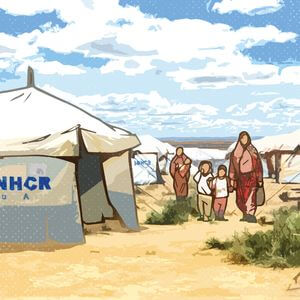Rickettsia prowazekii

Like a virus
Somewhat like viruses, Rickettsia prowazekii multiplies only within cells. We speak of strictly intracellular bacteria. This Gram-negative1 bacillus is also colored pink by the Gimenez fuchsin.
Typhus
Rickettsia prowazekii is the agent of epidemic typhus2, which usually occurs in refugee camps or in prisons where promiscuity and insalubrity are observed. Typhus is transmitted by body lice (Pediculus humanus) and thus has also been occasionally documented in the hygiene-poor homeless.
Another species of rickettsia also causes typhus: Rickettsia typhi. Unlike Rickettsia prowazekii, which is transmitted by body lice, Rickettsia typhi is transmitted by rat fleas.
Typhus is characterized by headache, fever and confusion (called “tuphos” in Greek). Although severe with a mortality rate of 3-10%, this disease can be successfully treated with certain antibiotics, including doxycycline.
Note that there are many other species of rickettsia that are transmitted by ticks and cause spotted fever3 (a fever associated with skin rashes). For example, Rickettsia conorii causes Mediterranean spotted fever, which is transmitted by Ripicephalus sanguineus, a dog tick.

- Black cards
- Akkermancia muciniphila
- Aspergillus fumigatus
- Bifidobacterium
- Candida albicans
- Chlamydia trachomatis
- Clostrioides difficile
- HBV
- HPV
- Human immunodeficiency virus
- Klebsiella pneumoniae
- Lactobacille
- Leishmania
- Leptospira interrogans
- Neisseria meningitidis
- Mumps virus
- Streptococcus pneumoniae
- Rickettsia prowazekii
- Measles virus
- Rubella
- Toxoplasma gondii
- Treponema palidum
- Chickenpox virus
- Vibrio cholera
- Zikavirus
